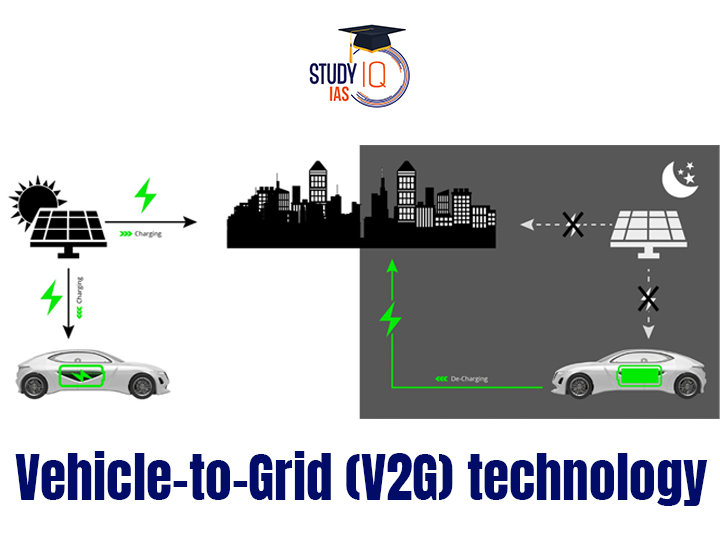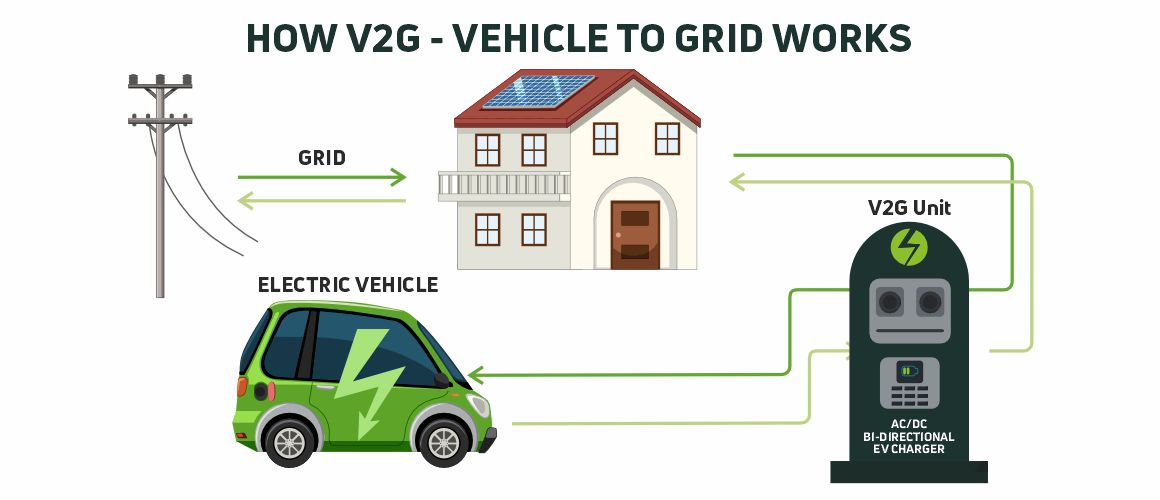Table of Contents
Context: Recently, Kerala State Electricity Board (KSEB) and IIT Bombay have initiated a pilot project to explore the implementation of Vehicle-to-Grid (V2G) technology in Kerala.
About Vehicle-to-Grid (V2G) Technology
- Vehicle-to-Grid (V2G) Technology is a system where electric vehicles (EVs) can not only consume electricity from the grid but also send it back when needed.
- EVs act as decentralised mobile energy storage units.
- V2G enables two-way energy flow:
- G2V (Grid to Vehicle) – charging the EV.
- V2G (Vehicle to Grid) – discharging electricity from the EV back to the grid.
Advantages of V2G Technology
- Grid Stability: It helps to balance supply and demand, especially with intermittent renewable energy sources.
- Enhanced Use of Renewable Energy: It stores excess solar/wind energy during low demand & Discharges it when renewable generation is low or demand is high.
- Reduced Peak Load Stress: EVs can supply energy during peak demand hours, reducing stress on generation and distribution systems.
- Emergency Backup Power: EVs can serve as emergency power sources during outages or disasters.
- Economic Benefits for EV Owners: EV owners can earn money or credits by selling power back to the grid.



 Advanced Air Defence Radars: Types, Comp...
Advanced Air Defence Radars: Types, Comp...
 Ion Chromatography, Working and Applicat...
Ion Chromatography, Working and Applicat...
 Broadly Neutralising Antibodies (bNAbs):...
Broadly Neutralising Antibodies (bNAbs):...

























